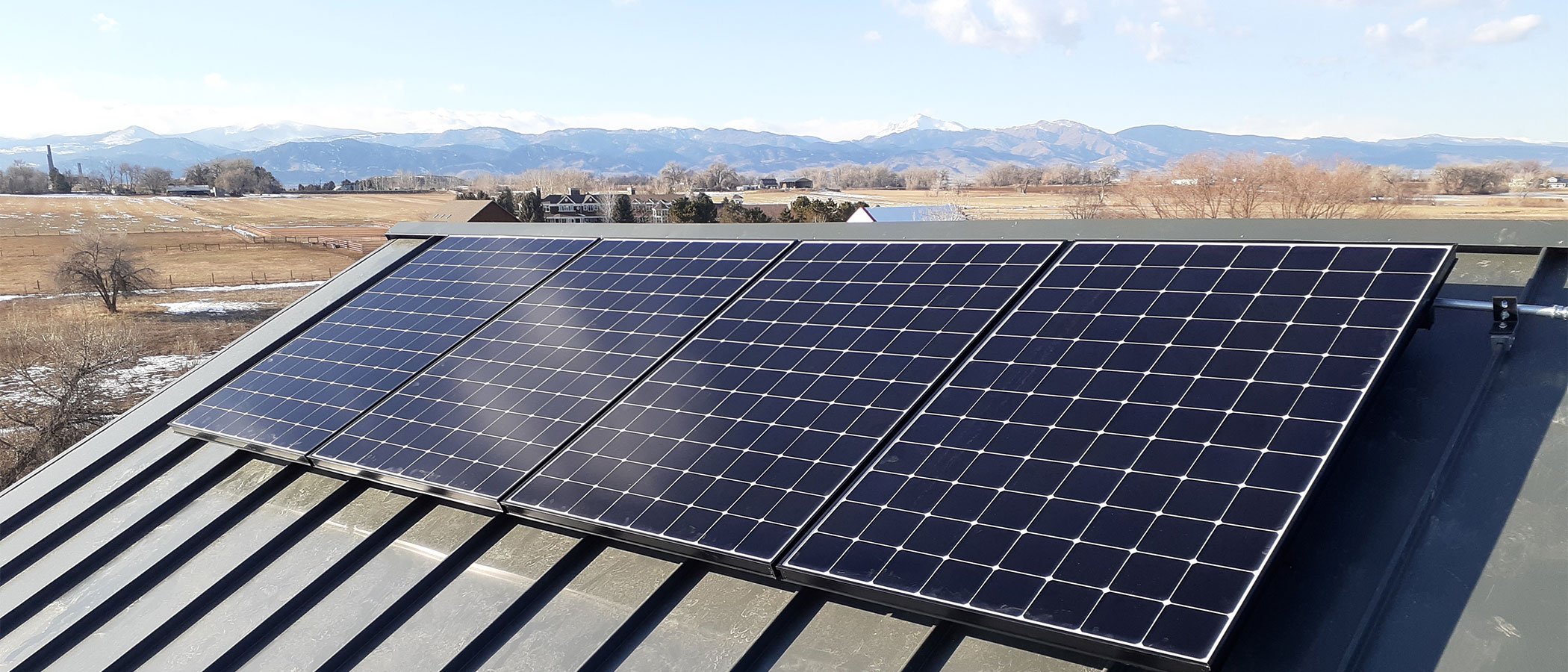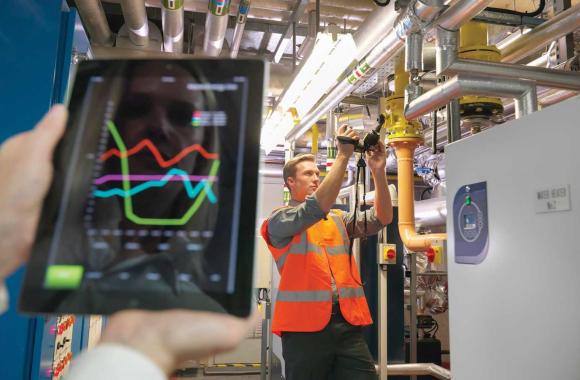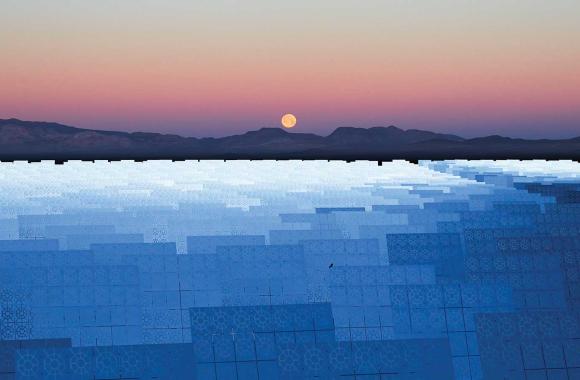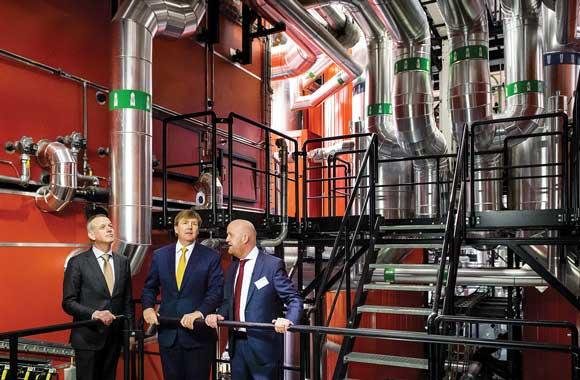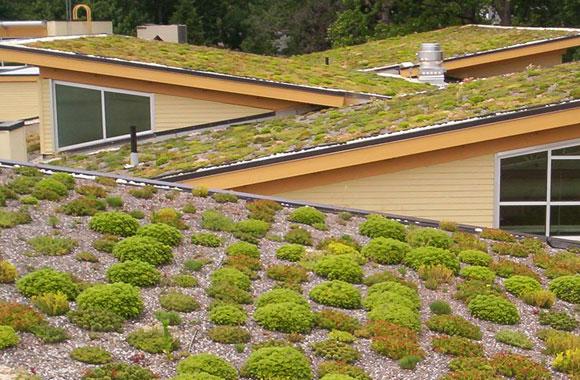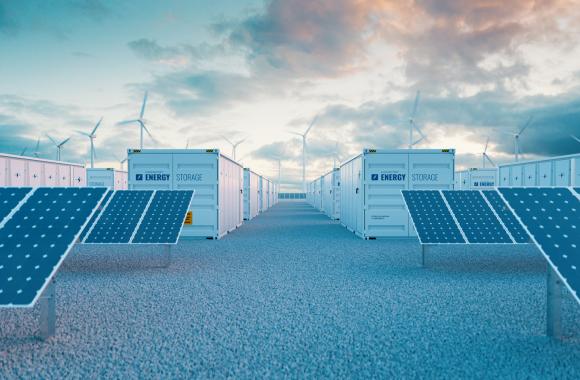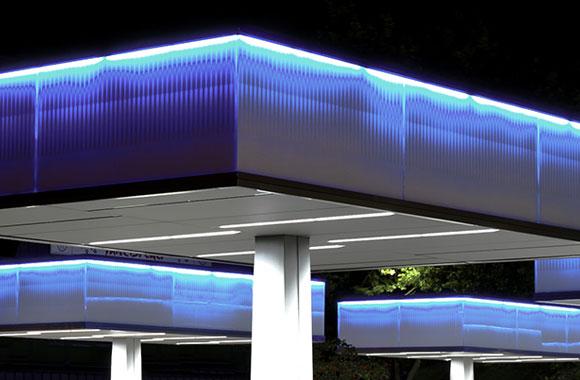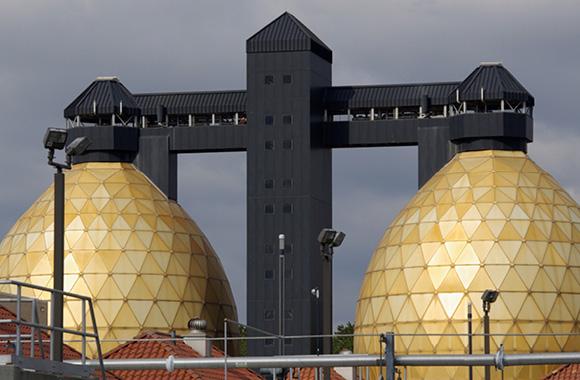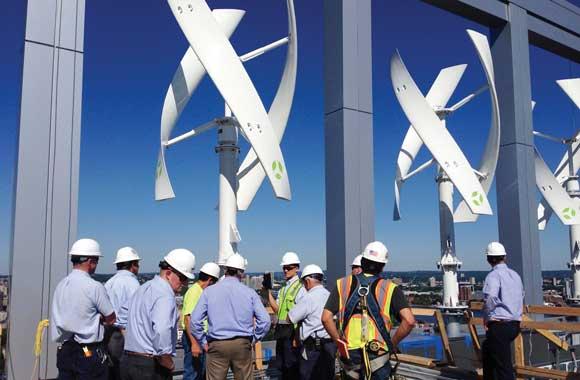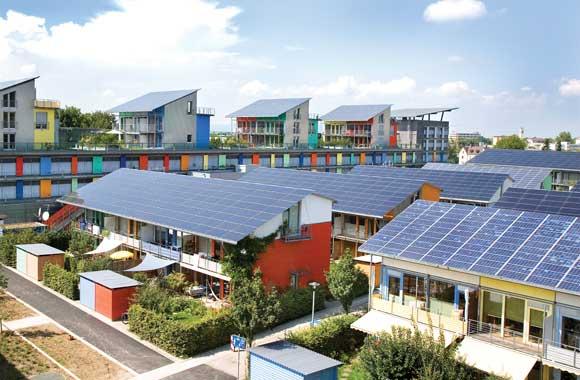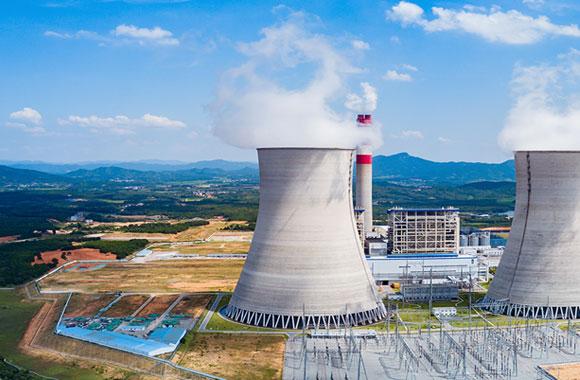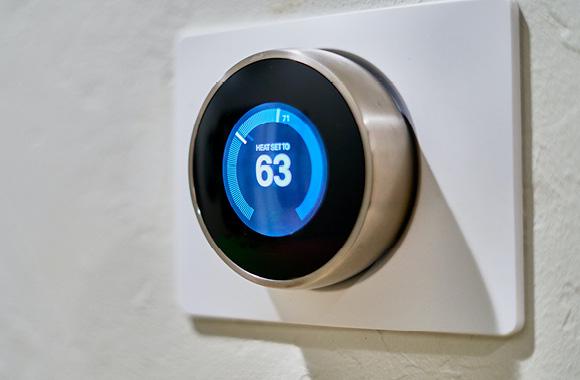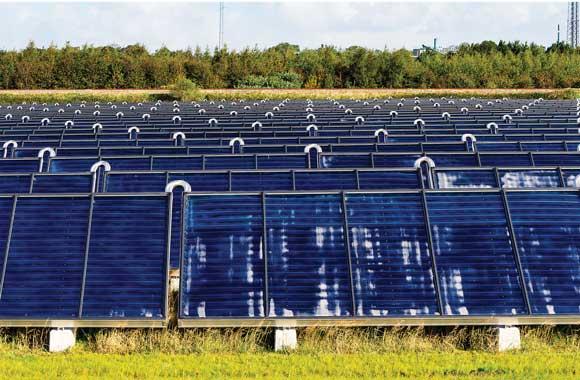Distributed Solar Photovoltaics
Whether grid-connected or part of stand-alone systems, rooftop solar panels and other distributed solar photovoltaic systems offer hyper-local, clean electricity generation.
Reduced/Sequestered
2020–2050
To Implement
Operational Savings
Impact
We assume that distributed solar photovoltaics can grow from 180 terawatt-hours of electricity generation to 6,010.21–9,786.80 terawatt-hours by 2050. This large range is due to the many possibilities for future renewable technologies and the extent of electrification. That growth can avoid 26.65–64.86 gigatons of greenhouse gas emissions. With implementation costs declining by the day, increased adoption of distributed solar photovoltaics could save US$7.61–13.14 trillion in operation, maintenance, and fuel costs over fossil fuel–based electricity generation.
Introduction
Distributed solar photovoltaics (PV) are systems that typically are sited on rooftops, but have less than 1 megawatt of capacity. This solution replaces conventional electricity-generating technologies such as coal, oil, and natural gas power plants.
In a PV system, a solar cell turns energy from the sun into electricity. Solar cells can be divided into three generations. First-generation solar cells, which currently predominate the market, are based on single or multi-crystalline silicon. Second-generation solar cells, known as thin-film solar PV cells, are more efficient and have higher capacity factors. Even more advanced third-generation solar cells, such as high-concentration PV cells, dye sensitized solar cells, and organic solar cells, are still under development.
Most previous adoption scenarios predicted that PV (both rooftop and utility scale) would generate less than 10 percent of electricity by 2050. However, in light of rapid recent adoption of solar PV in many countries, increasing solar cell efficiencies, and rapidly declining costs, some recent scenarios have predicted that almost 60 percent of global electricity could come from solar PV by 2050.
Methodology
We split the solar PV market between the Distributed Solar Photovoltaics solution (representing implementation by households and building owners) and the Utility-Scale Solar Photovoltaics solution, implemented by public and private utilities. This analysis models distributed solar PV systems with under 1 megawatt of capacity.
Total Addressable Market
We based the total addressable market for the Distributed Solar Photovoltaics solution on projected global electricity generation from 2020 to 2050. The total addressable market is different for the two adoption scenarios because Scenario 2 projects extensive electrification of transportation, space heating, etc., dramatically increasing demand and therefore production of electricity worldwide.
We estimated current adoption (the amount of functional demand supplied in 2018) at 0.7 percent (183 terawatt-hours) of generation. Based on estimations of the future solar PV market, we assumed that distributed PV installations will represent around 40 percent of the solar PV market in 2050, with the Utility-Scale Solar Photovoltaics solution capturing the remaining 60 percent (US DOE, 2012; IEA, 2014).
Adoption Scenarios
We calculated impacts of increased adoption of the Distributed Solar Photovoltaics solution from 2020 to 2050 by comparing two growth scenarios with a reference scenario in which the market share was fixed at the current levels.
- Scenario 1: This scenario is based on the evaluation of yearly averages of five optimistic scenarios: IEA (2017) Energy Technology Perspectives 2DS and B2DS scenarios; IEA (2018) World Energy Outlook SDS; IRENA (2018) REmap Case scenario; and Grantham Institute and Carbon Tracker (2017) Strong PV Scenario using, a high-growth trajectory. Adoption is 6,010.21 terawatt-hours (14 percent of the total addressable market).
- Scenario 2: This scenario is based on the yearly average values of three 100 percent RES scenarios of electricity generation by 2050: Greenpeace (2015) Advanced Energy [R]evolution Scenario, Ram et al. (2019) scenario, and Ecofys (2018) 1.5°C scenario. These scenarios represent very ambitious pathway towards a fully decarbonized energy system in 2050. Adoption is 9,786.80 terawatt-hours (just over 14 percent of the total addressable market).
Financial Model
All monetary values are presented in 2014 US$.
Based on a meta-analysis of reported installation costs around the world, we assumed a total first cost of US$2,012 per kilowatt. Applying a learning rate of 19.5 percent, which includes separate rates for PV modules and balance of systems, reduces total first cost to US$653 per kilowatt in 2030 and to US$462 in 2050, compared with US$1,786 per kilowatt for coal, natural gas, and oil power plants. We used an average capacity factor of 19 percent, compared with 57 percent for conventional technologies, and fixed operation and maintenance costs of US$21.8 per kilowatt, compared with US$34.7 per kilowatt for the conventional technologies.
Integration
We adjusted total addressable markets to account for reduced demand resulting from the growth of efficient-improving technologies (e.g., LED Lighting and High-Efficiency Heat Pumps) as well as increased electrification from solutions such as Electric Cars and High-Speed Rail. We used a meta-analysis to determine direct and indirect emissions factors for each technology, then based grid emissions factors on the mix of electricity- generating technologies, which varied over time.
Results
Scenario 1 avoids 26.65 gigatons of carbon dioxide equivalent greenhouse gas emissions from 2020 to 2050, with US$517.31 billion in associated net first costs to implement and US$7.61 trillion of lifetime net operational savings.
Scenario 2 showed greenhouse gas emission reductions over 2020–2050 of 64.86 gigatons associated with US$352.45 billion in net first costs to implement and US$13.14 trillion of lifetime net operational savings.
Discussion
Solar has an incredibly promising long-term potential because sunlight is plentiful and future advances in battery and PV technologies should continue to drive the adoption, even in the absence of specific policy interventions. The financial results make it clear that global adoption of rooftop solar is economically viable and will provide a significant return on investment. Rapid adoption will also contribute substantially to global greenhouse gas abatement.
Nevertheless, the massive adoption of rooftop solar requires several issues to be resolved. Sunlight is intermittent, and solar PV does not always generate electricity when consumers need it. This means that PV often must be installed alongside dispatchable sources such as coal and natural gas or an energy storage system, and demand will need to flex to correspond with times of abundant supply.
Distributed solar PV may also face materials constraints, since some inputs are only mined as byproducts of mining for other metals. Changes in systems design could help address this issue.
References
Grantham Institute and Carbon Tracker (2017). Expect the Unexpected. The Disruptive Power of Low-carbon Technology. Grantham Institute- Climate Change and the Environment and Carbon Tracker Initiative. Retrieved from: https://www.imperial.ac.uk/media/imperialcollege/grantham-institute/public/publications/collaborative-publications/Expect-theUnexpected_CTI_Imperial.pdf
Greenpeace. (2015). World Energy [R]evolution, a sustainable world energy outlook. Greenpeace. Retrieved from: http://www.greenpeace.org/international/Global/international/publications/climate/2015/Energ y-Revolution-2015-Full.pdf
IEA. (2014). Projected Costs of Generating Electricity – edition 2010. Organisation for Economic Co-operation and Development - International Energy Agency and Nuclear Energy Agency. France. Retrieved from http://www.worldenergyoutlook.org/media/weowebsite/energymodel.
IEA. (2017). Energy Technology Perspectives 2017 - Catalysing Energy Technology Transformations. International Energy Agency (IEA). Retrieved from: https://www.iea.org/etp/
IEA. (2018). World Energy Outlook 2018. International Energy Agency (IEA). Retrieved from: https://webstore.iea.org/world-energy-outlook-2018
IRENA. (2018). Global Energy Transformation: A Roadmap to 2050. International Renewable Energy Agency, Abu Dhabi. Accessed https://www.irena.org/-/media/Files/IRENA/Agency/Publication/2018/Apr/IRENA_Report_GET_2018.pdf.
U.S. Department of Energy. (2012). Analysis of PV and CSP Growth in the SunShot Scenario. In SunShot Vision Study 2012. Washington, DC
What You Can Do
Arrange to have a solar energy expert speak at a local library, community center, or service organization or faith community gathering.
Install solar panels on your home if it's suitable—subscribe to a solar farm or garden if not.
- Expand your knowledge by exploring another Drawdown solution.
Co-benefits
Access to the clean and affordable energy solar photovoltaics provide supports education, health care, agriculture, and small businesses.
Deploying this climate solution stimulates local economies and creates employment opportunities. The installation, operation, and maintenance of renewable energy systems require skilled labor, creating jobs and contributing to economic growth.
Shifting to clean and renewable energy sources reduces indoor and outdoor air pollution, which is a significant health concern in many developing countries. By replacing traditional fuels like wood and coal with cleaner alternatives improves air quality, reducing respiratory illnesses and related health issues.
In developing countries, this solution expands access to modern and reliable energy services, enabling communities to meet basic energy needs such as lighting, cooking, heating, and powering essential services like health-care facilities and schools.

